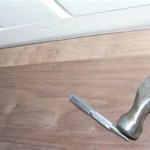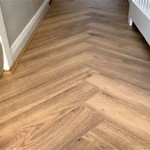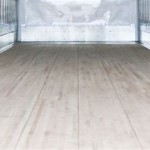Armstrong Engineered Wood Flooring Warranty: A Comprehensive Guide
Understanding the nuances of warranties is crucial for homeowners investing in new flooring. Armstrong Flooring, a well-established name in the industry, offers warranties on its engineered wood flooring products. These warranties provide a degree of protection against manufacturing defects and premature wear, giving consumers peace of mind. However, comprehending the scope, limitations, and specific requirements of these warranties is essential to ensure valid claims and avoid potential disappointments. This article aims to provide a comprehensive overview of Armstrong Engineered Wood Flooring warranties, covering key aspects that homeowners should be aware of.
The specific details of an Armstrong Engineered Wood Flooring warranty can vary depending on the product line and the date of purchase. Therefore, the first and most crucial step is to carefully review the warranty document that accompanies the flooring. This document will outline the exact terms, conditions, coverage period, and exclusions applicable to your particular flooring product. Avoid making assumptions based on general information; the warranty document is the ultimate source of truth.
Generally, Armstrong Engineered Wood Flooring warranties cover manufacturing defects, which include flaws in the materials or workmanship that affect the structural integrity or appearance of the flooring. These defects may manifest as delamination, warping, or unusual color variations that are not within the normal range of natural wood characteristics. The warranty also often covers finish wear, protecting against the finish wearing through to the bare wood under normal residential use. The duration of the finish wear warranty can vary significantly, ranging from a few years to several decades, depending on the specific product line and the thickness of the wear layer.
It's important to note that warranties aren't guarantees against all possible flooring issues. They are designed to protect against specific defects and wear caused by normal use. Damage resulting from abuse, misuse, improper installation, inadequate maintenance, or accidents is typically excluded. Understanding these exclusions is critical to avoid filing invalid warranty claims.
Key Point 1: Understanding Warranty Coverage and Duration
One of the first things to examine in the warranty document is the specific coverage provided. This includes what types of defects or wear are covered and for how long. As mentioned earlier, manufacturing defects and finish wear are the most common areas covered. The duration of the warranty is a significant factor. Some Armstrong Engineered Wood Flooring products come with limited warranties, while others offer extended or lifetime warranties. "Lifetime" in this context typically refers to the lifespan of the flooring under normal residential use by the original purchaser.
The definition of "normal residential use" deserves careful consideration. It typically implies reasonable foot traffic, proper climate control, and adherence to recommended maintenance practices. Commercial use is usually excluded from residential warranties, as commercial environments often subject flooring to much heavier wear and tear. Furthermore, the warranty may specify the maximum allowable percentage of affected flooring area for a claim to be valid. For instance, a warranty may cover finish wear only if it affects a certain percentage of the total installed flooring area.
The warranty document will also detail the specific remedies available in case of a valid claim. These remedies may include repair, replacement, or a refund of the original purchase price. The choice of remedy is typically at the discretion of Armstrong Flooring. In some cases, if the original flooring product is no longer available, Armstrong Flooring may offer a similar product of equal or lesser value as a replacement.
It is crucial to maintain records related to your flooring purchase, including the sales receipt, the installation contract, and any maintenance products used. These documents may be required to substantiate a warranty claim. Taking photographs of the flooring during and after installation can also be helpful in documenting its condition.
Furthermore, many warranties are transferable to subsequent homeowners. However, the terms of transferability may be limited, and there may be specific procedures to follow, such as notifying Armstrong Flooring of the change in ownership. Understanding the transferability of the warranty can add value to your home if you decide to sell it in the future.
Key Point 2: The Importance of Proper Installation and Maintenance
Proper installation is paramount to the validity of an Armstrong Engineered Wood Flooring warranty. The warranty typically requires that the flooring be installed according to Armstrong Flooring's specific installation guidelines. These guidelines cover aspects such as subfloor preparation, acclimation of the flooring to the site conditions, use of appropriate adhesives or fasteners, and proper expansion gaps along the perimeter of the room.
Failure to follow these installation guidelines can void the warranty. For example, if the subfloor is not adequately prepared (e.g., is not level, clean, and dry), it can lead to problems such as uneven flooring, squeaking, or buckling. Similarly, neglecting to acclimate the flooring to the site conditions can result in excessive expansion or contraction, causing gaps or warping.
Employing a qualified and experienced flooring installer is crucial to ensure proper installation. A professional installer will be familiar with Armstrong Flooring's installation guidelines and will have the necessary tools and expertise to install the flooring correctly. Retaining records of the installation, including the installer's contact information and any notes about the installation process, is advisable.
Maintenance is equally important for maintaining the validity of the warranty. Armstrong Flooring typically provides specific recommendations for cleaning and maintaining its engineered wood flooring products. These recommendations may include using approved cleaning products, avoiding excessive moisture, protecting the flooring from scratches and dents, and regularly sweeping or vacuuming to remove dirt and debris.
Using cleaning products that are not recommended by Armstrong Flooring can damage the finish and void the warranty. Similarly, neglecting to protect the flooring from scratches and dents can lead to premature wear and tear. Placing furniture pads under heavy furniture and using mats at entrances can help to prevent scratches and dents. Regular sweeping or vacuuming can remove abrasive particles that can scratch the finish over time.
Addressing spills promptly is also essential. Liquids can seep into the seams between the boards and cause damage to the core of the flooring. Cleaning up spills immediately with a damp cloth can prevent this damage.
Key Point 3: Common Warranty Exclusions and Limitations
Armstrong Engineered Wood Flooring warranties typically include a number of exclusions and limitations that homeowners should be aware of. These exclusions are conditions or circumstances under which the warranty does not apply. Understanding these exclusions can help homeowners avoid situations that could void their warranty.
As mentioned earlier, damage caused by abuse, misuse, or accidents is typically excluded. This includes damage caused by dropping heavy objects, dragging furniture, or exposing the flooring to excessive moisture or heat. Similarly, damage caused by pets, such as scratches or stains, is usually not covered.
Damage caused by improper installation or inadequate maintenance is also a common exclusion. This includes damage resulting from failure to follow Armstrong Flooring's installation guidelines or from using inappropriate cleaning products or maintenance practices. It is the homeowner's responsibility to ensure that the flooring is installed and maintained according to the manufacturer's recommendations.
Natural variations in wood grain and color are also typically excluded. Engineered wood flooring is made from natural wood, and variations in grain and color are inherent characteristics of the material. These variations are not considered to be manufacturing defects and are not covered by the warranty.
Fading or discoloration caused by exposure to sunlight is another common exclusion. Sunlight can cause wood to fade or change color over time. Using window coverings, such as blinds or curtains, can help to mitigate this effect, but the warranty typically does not cover fading or discoloration caused by sunlight exposure.
Commercial use is almost always excluded from residential warranties. Residential warranties are designed for normal residential wear and tear, which is typically less severe than commercial wear and tear. If the flooring is installed in a commercial setting, it may be subject to a different warranty or may not be covered at all.
Finally, consequential or incidental damages are typically excluded. Consequential damages are indirect losses that result from a defect or breach of warranty, such as lost profits or the cost of temporary housing. Incidental damages are expenses incurred in connection with a defect or breach of warranty, such as the cost of removing and reinstalling the flooring. The warranty typically covers only the direct cost of repairing or replacing the defective flooring.
In summary, understanding the Armstrong Engineered Wood Flooring warranty requires careful review of the specific warranty document, adherence to installation guidelines, diligent maintenance practices, and awareness of common exclusions and limitations. By taking these steps, homeowners can maximize their protection and ensure the long-lasting beauty and performance of their engineered wood flooring.

Engineered Wood Flooring Hartco Formerly Armstrong Hydroblok Woods Edge Ekhb75l35w Hurst Hardwoods

Armstrong Hardwoord Prime Harvest Hickory 5 Inch Eagle Landing

Armstrong Hardwoord Prime Harvest Oak 5 Inch Warm Caramel

Enginereed Wood Flooring Hartco Formerly Armstrong Prime Harvest Whisper 4510hwhee Hurst Hardwoods

Enginereed Wood Flooring Hartco Formerly Armstrong Prime Harvest Light Taupe Ekph64l05see Hurst Hardwoods

Armstrong Hardwoord Necessity Urbanite

Engineered Wood Flooring Hartco Formerly Armstrong Historic Reveal Warm Brown Ehrl63l25w Hurst Hardwoods

Hartco Formerly Armstrong Prime Harvest Engineered 3 Oak Gunstock Reserve Hardwood Flooring

Enginereed Wood Flooring Hartco Formerly Armstrong Prime Harvest Tan Ekph64l02see Hurst Hardwoods

Armstrong Performance Plus Esp5206 Efloors Com
Related Posts








